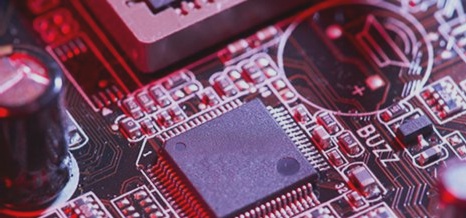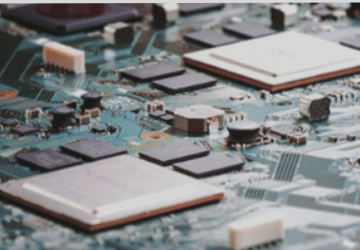2. By 1943, Americans had primarily adopted this technology for military radios.
3. In 1948, the United States officially approved this invention for commercial use.
4. It wasn’t until the mid-1950s that printed circuit boards began to see widespread use.
5. Before the advent of PCBs, electronic components were interconnected directly by wires.
6. Today, wires are mainly used only for experimental applications in laboratories; printed circuit boards have firmly established themselves as the dominant technology in the electronics industry.
7. To increase the wiring area, multilayer boards incorporate multiple single- and double-sided layers.
8. For instance, a PCB might use one double-sided layer as the inner layer, with two single-sided layers as the outer layers, or two double-sided layers as the inner layers with two single-sided layers as the outer layers.

1. The positioning system and the insulating bonding material alternate with the conductive pattern in printed circuit boards, which are interconnected according to design requirements to form four-layer and six-layer printed circuit boards, also known as multilayer printed circuit boards.
2. Copper-clad laminate is a substrate material used for making printed circuit boards. It supports various components and facilitates electrical connections or insulation between them.
3. From the early 20th century until the late 1940s, numerous resins, reinforcing materials, and insulating substrates for substrate materials emerged, leading to preliminary technological advancements. These developments paved the way for copper-clad laminates, the most typical substrate material for printed circuit boards. Concurrently, PCB manufacturing technology using metal foil etching (subtractive method) for circuit production was established, playing a decisive role in defining the structural composition and characteristics of copper-clad laminates.
4. In printed circuit boards, lamination, also known as “pressing,” involves bonding the inner layers, prepreg, and copper foil together under high temperature to create a multilayer board. For instance, a four-layer board requires a single inner layer, two copper foils, and two sets of prepregs to be pressed.
5. The drilling process for multilayer PCB boards is generally performed in stages, involving one drill and two drills.
6. The first drill stage includes copper immersion, where the holes are plated with copper to connect the upper and lower layers, such as vias and original holes.
7. The second drill stage involves creating holes that do not require copper, such as screw holes, positioning holes, and heat sinks. These holes do not need copper in the inner layers.
8. Film refers to the exposed negative. The surface of the PCB is coated with a layer of photosensitive liquid, which is then dried after a temperature test of 80 degrees Celsius. A film is applied to the PCB, exposed with ultraviolet light, and then removed to reveal the circuit diagram on the PCB.
9. Green oil, or solder mask, refers to the ink applied to the copper foil on the PCB. This layer of ink covers all conductors except for soldering pads, helping to prevent soldering short circuits during use and prolonging the PCB’s lifespan. Solder masks come in various colors, including green, black, red, blue, yellow, and white. Green is the most commonly used color, often referred to as green oil.
10. The plane of a computer motherboard is a PCB (printed circuit board), typically a four-layer or six-layer board. To reduce costs, low-end motherboards are usually four-layer boards, consisting of a main signal layer, a ground layer, a power layer, and a secondary signal layer. Six-layer boards include an additional power layer and a middle signal layer, making them more resistant to electromagnetic interference and resulting in a more stable motherboard.



